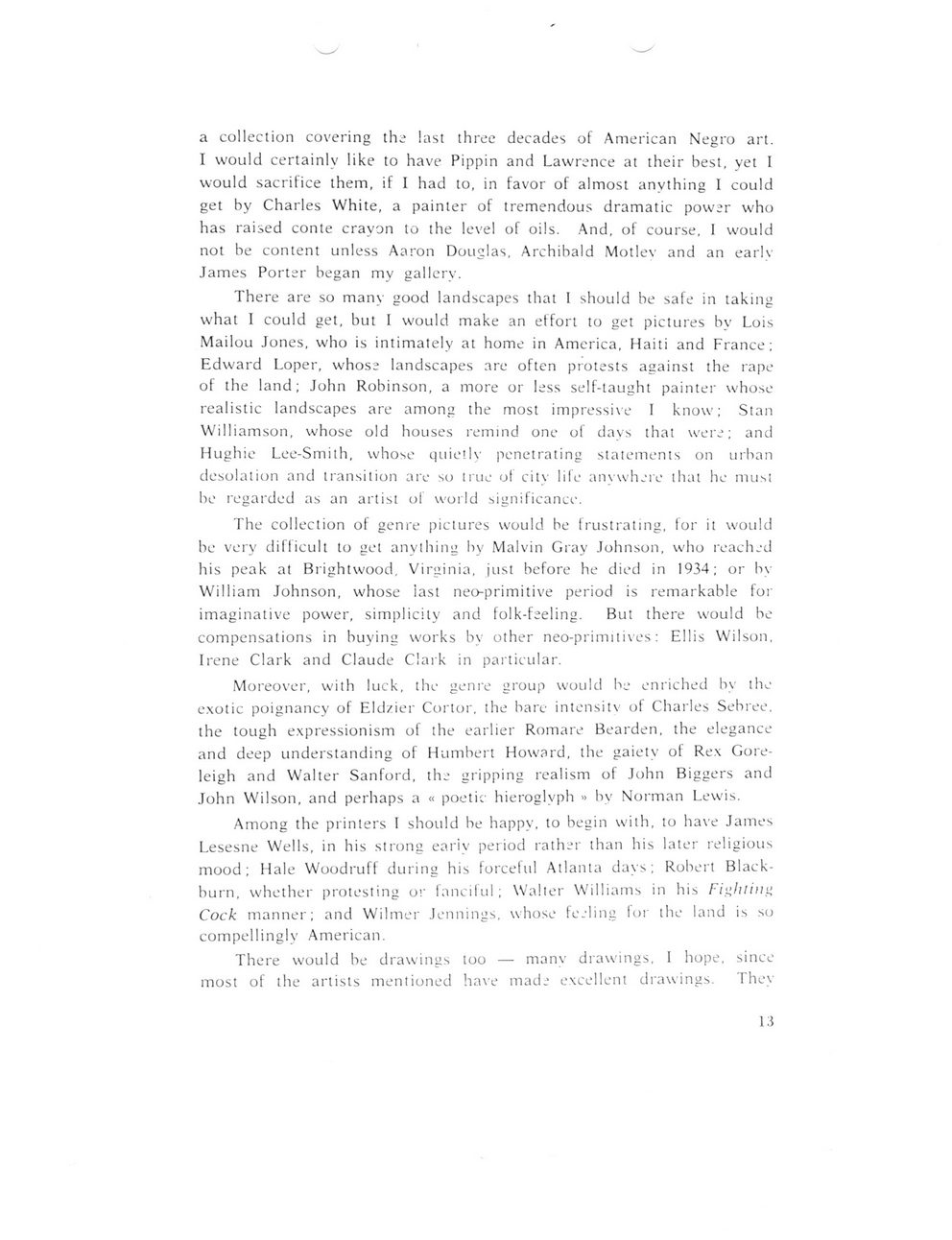This text was obtained via automated optical character recognition.
It has not been edited and may therefore contain several errors.
a collection covering the last three decades of American Negro art. I would certainly like to have Pippin and Lawrence at their best, yet I would sacrifice them, if I had to, in favor of almost anything I could get by Charles White, a painter of tremendous dramatic power who has raised conte crayon to the level of oils. And, of course, I would not be content unless Aaron Douglas, Archibald Motlev and an earlv James Porter began my gallery. There are so many good landscapes that I should be safe in taking what I could get, but I would make an effort to get pictures bv Lois Mailou Jones, who is intimately at home in America, Haiti and France; Edw'ard Loper, whose landscapes are often protests against the rape of the land; John Robinson, a more or less self-taught painter whose realistic landscapes are among the most impressive I know; Stan Williamson, whose old houses remind one of days that were; and Hughie Lee-Smith, whose quietly penetrating statements on urban desolation and transition are so true ol city lile anywhere that he must be regarded as an artist ol world significance. The collection of genre pictures would be frustrating, for it would be very difficult to get anything by Malvin Gray Johnson, who reached his peak at Brightwood, Virginia, just before he died in 1934; or bv William Johnson, whose iast neo-primitive period is remarkable for imaginative power, simplicity and folk-feeling. But there would be compensations in buying works by other neo-primitives: Ellis Wilson, Irene Clark and Claude Clark in particular. Moreover, with luck, the genre group would be enriched by the exotic poignancy of Eldzier Conor, the bare intensity ot Charles Sebree, the tough expressionism of the earlier Romare Bearden, the elegance and deep understanding of Humbert Howard, the gaiety of Rex Gore-leigh and Walter Sanford, the gripping realism of John Biggers and John Wilson, and perhaps a ? poetic hieroglyph ? by Norman Lewis. Among the printers I should be happy, to begin with, to have James Lesesne Wells, in his strong eariv period rather than his later religious mood; Hale Woodruff during his forceful Atlanta days; Robert Blackburn, whether protesting or fanciful; Walter Williams in his Fighting Cock manner; and Wilmer Jennings, whose feeling for the land is so compellingly American. There would be drawings too ? many drawings, I hope, since most of the artists mentioned have made excellent drawings. They 13

Barthe, Richmond American-Negro-Art-12